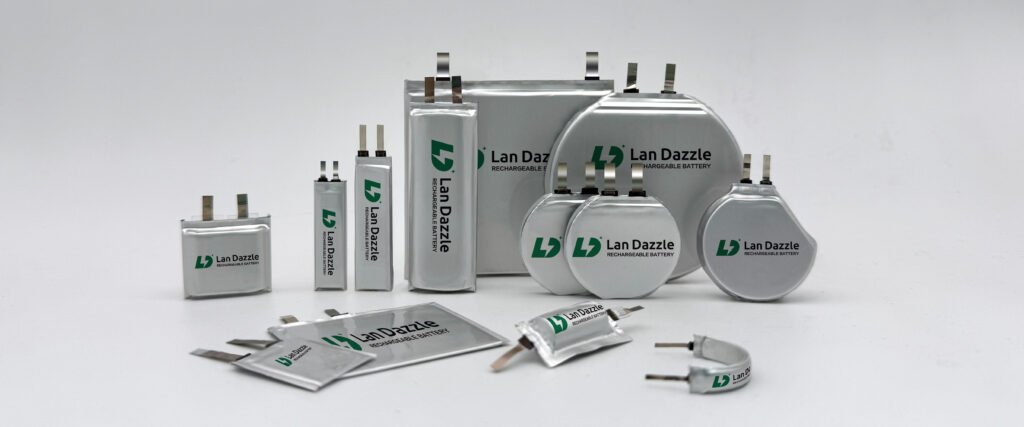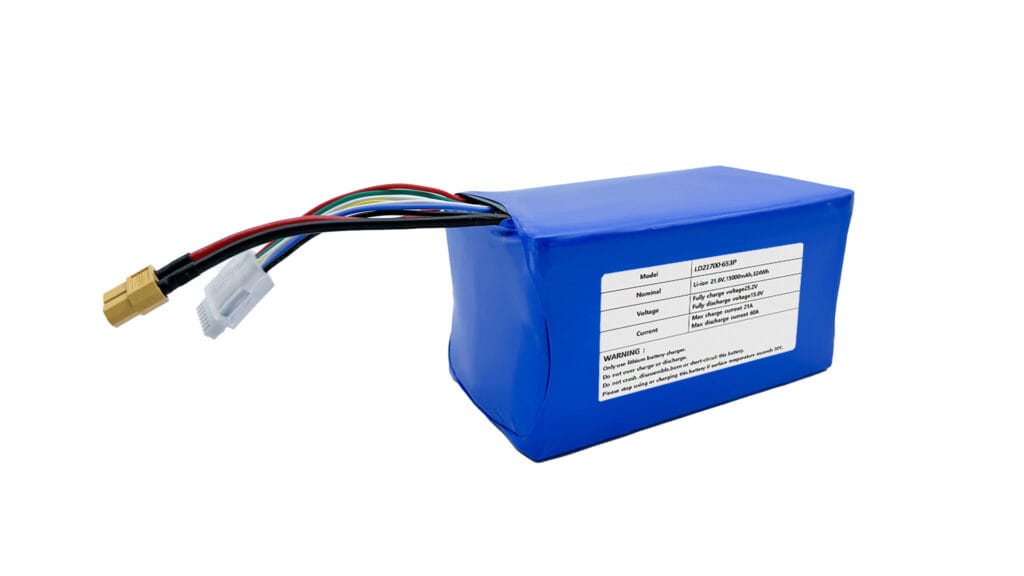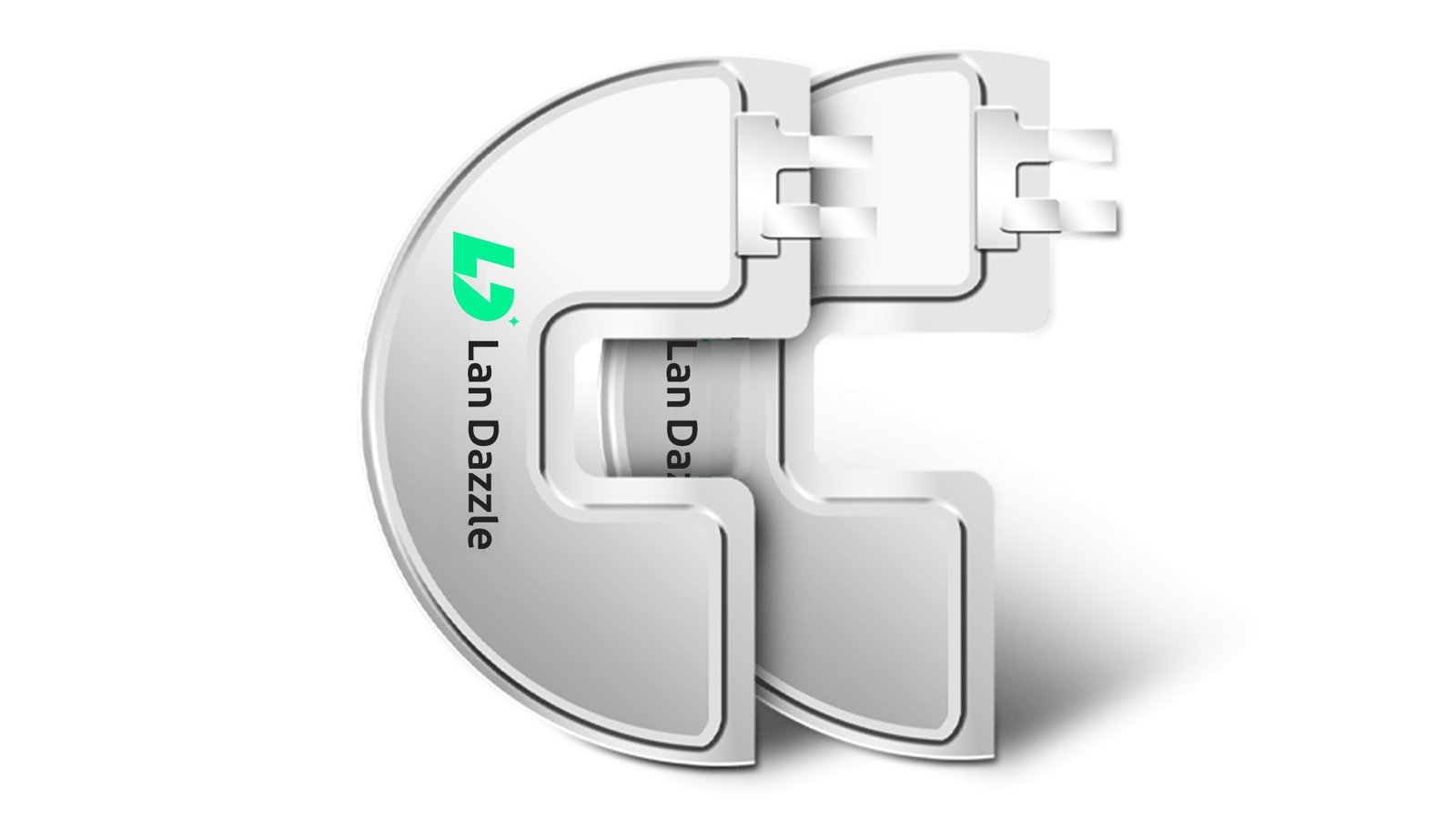في عالم تخزين الطاقة الذي يتطور باستمرار، برزت بطارية أنود السيليكون كمرشح رائد في السعي لتحقيق أداء أعلى وكثافة طاقة أكبر. على عكس بطاريات الليثيوم أيون التقليدية التي تستخدم الجرافيت في الغالب كمادة أنود, بطاريات أنود السيليكون دمج السيليكون، وهو عنصر ذو قدرة نظرية استثنائية لتخزين أيونات الليثيوم. يقود هذا التحول الأساسي في مواد الأنود إلى تطورات كبيرة في تكنولوجيا البطاريات، مما يعد بطاقة تدوم طويلاً لمجموعة واسعة من التطبيقات، من السيارات الكهربائية للإلكترونيات المحمولة
ما هي مزايا بطارية أنود السيليكون؟
إن الإمكانيات الرائعة للسيليكون كمادة أنود للبطاريات متجذرة بعمق في السلوك الكهروكيميائي الفريد عند التفاعل مع أيونات الليثيوم. وعلى النقيض من الجرافيت، حيث يتم إقحام أيونات الليثيوم بين طبقات ذرات الكربون، يخضع السيليكون لعملية إشابة مع الليثيوم. هذا الاختلاف الجوهري في آلية تخزين الليثيوم يسمح للسيليكون استيعاب عدد أكبر بكثير من أيونات الليثيوم لكل ذرة.
وعلى وجه التحديد، يمكن لذرة واحدة من السيليكون أن تتحد مع ما يصل إلى 4.4 ذرات ليثيوم, تكوين Li₄.₄Si. وهذا يُترجم إلى قدرة جاذبية نظرية مذهلة تبلغ حوالي 3600 مللي أمبير/غرام للسيليكون، وهو ما يقزم السعة المتواضعة التي يقدمها الجرافيت والتي تبلغ 372 مللي أمبير/غرام. وتعد هذه الزيادة في سعة تخزين الليثيوم بمقدار عشرة أضعاف تقريبًا القوة الدافعة الرئيسية وراء جهود البحث والتطوير العالمية المكثفة التي تركز على أنود بطارية السيليكون التكنولوجيا.
الآثار المترتبة على ذلك سعة أعلى عميقة، مما يشير إلى إمكانية إنشاء بطاريات ذات كثافة طاقة أكبر بكثيرتمكين الأجهزة من الركض لفترة أطول بشحنة واحدة والمركبات للسفر لمسافة أبعد بشحنة واحدة. وعلى الرغم من تعقيد الحركية الكهروكيميائية لتفاعل الليثيوم مع السيليكون، إلا أنها تنطوي أيضًا على إمكانية تحقيق معدلات شحن أسرع في ظل ظروف محسّنة، مما يعزز من جاذبية بطاريات أنود السيليكون لتطبيقات مختلفة. إن فهم هذه الميزة الكهروكيميائية الأساسية هو المفتاح لتقدير سبب اعتبار السيليكون مغيرًا لقواعد اللعبة في مستقبل تخزين الطاقة.
قياس الأداء: بطاريات أنود السيليكون مقابل البطاريات المنافسة
| الميزة | بطاريات أنود السيليكون | بطاريات أنود الجرافيت | بطاريات أنود الليثيوم المعدني | الأنودات الناشئة الأخرى (مثل القصدير والجرمانيوم والأكاسيد المعدنية) |
|---|---|---|---|---|
| السعة النظرية | عالية جدًا (حوالي 3600 مللي أمبير/غرام) | منخفضة (حوالي 372 مللي أمبير/غرام) | عالية للغاية (حوالي 3860 مللي أمبير/غرام) | يختلف (أعلى بشكل عام من الجرافيت، وأقل من السيليكون/الليثيوم) |
| كثافة الطاقة (مستوى الخلية) | إمكانات عالية (تعتمد على التغلب على التحديات) | معتدل | إمكانات عالية جداً (السلامة والاستقرار هما العقبتان الرئيسيتان) | إمكانات متوسطة إلى عالية (تعتمد على المواد) |
| دورة الحياة | أقل حاليًا (بسبب التوسع في الحجم) | عالية | منخفض جدًا (بسبب التفاعل وتكوين التشعبات) | يختلف (حسب المادة) |
| توسيع الحجم | عالية جدًا (~ 300% أثناء الليثنة) | منخفض جدًا (~10% أثناء الليثنة) | عالية (يؤدي تكوين التشعبات إلى تغيرات هيكلية) | يختلف (يعتمد على المواد، يمكن أن تكون كبيرة) |
| السلامة | مخاوف محتملة بسبب عدم الاستقرار الناتج عن التوسع | مرتفع نسبيًا | منخفضة (تفاعلية عالية، تكوين التشعبات) | يختلف (حسب المادة) |
| التكلفة | أعلى حاليًا (بسبب التصنيع المعقد) | منخفضة (تقنية راسخة وناضجة) | عالية محتملة (تحديات المعالجة والمناولة) | يختلف (حسب المادة والمعالجة) |
| التوصيلية | يمكن أن يكون أقل (غالبًا ما يتطلب إضافات موصلة) | عالية | عالية | يختلف (حسب المادة) |
| حالة التسويق التجاري | اهتمام بحثي متزايد، استخدام تجاري محدود | تقنية سائدة على نطاق تجاري واسع ومهيمنة | استخدام تجاري محدود، وأبحاث كبيرة جارية | المراحل الأولى من البحث والتطوير |
| المزايا الرئيسية | إمكانات كثافة طاقة عالية جدًا، وإمكانية شحن أسرع | دورة حياة جيدة ومستقرة ومنخفضة التكلفة | أعلى كثافة طاقة نظرية | إمكانية تحسين الثبات أو مقاييس الأداء المحددة |
| التحديات الرئيسية | توسع الحجم، وعدم استقرار مؤشر SEI، وعمر الدورة، والتكلفة | كثافة طاقة أقل | السلامة، وتكوين التشعبات، وضعف دورة الحياة | تختلف (الاستقرار، والتكلفة، وكثافة الطاقة) |
مواجهة التحديات: الابتكارات التي تقود جدوى أنود السيليكون
الطريق إلى تحقيق الإمكانات الكاملة ل أنود السيليكون لبطارية أيونات الليثيوم تتطلب التكنولوجيا معالجة التحديات الكامنة، وأهمها التمدد الكبير في حجم السيليكون أثناء دورة الشحن والتفريغ. يستجيب المجتمع البحثي العالمي والصناعة بالعديد من الاستراتيجيات المبتكرة:
-
بنيات المواد المتقدمة: وتوفر هندسة السيليكون على مقياس النانو، وإنشاء هياكل مثل الجسيمات النانوية والأسلاك النانوية والسيليكون المسامي، مساحة سطح أكبر ومساحة فراغ داخل القطب. ويسمح هذا التصميم لمادة السيليكون بالتمدد والانكماش بحرية أكبر، مما يقلل من الضغوط الداخلية التي تؤدي إلى التصدع وتلاشي القدرة.
-
المواد المركبة: ويؤدي الجمع بين السيليكون وأشكال مختلفة من الكربون، مثل الأنابيب النانوية الكربونية والجرافين والكربون غير المتبلور، إلى إنتاج مواد مركبة ذات توصيل كهربائي محسّن وسلامة هيكلية أفضل. يمكن أن تعمل المصفوفة الكربونية كمخزن مؤقت، حيث تستوعب بعض التغيرات في حجم أنود بطارية السيليكون ومنع تفكك القطب الكهربائي.
-
أنظمة الربط الجديدة: غالبًا ما تفتقر مواد رابطة البوليمر التقليدية المستخدمة في أقطاب البطاريات إلى المرونة والقوة الميكانيكية لتحمل الضغوط الناجمة عن تقلبات حجم السيليكون. يعمل الباحثون على تطوير مواد رابطة متطورة ذات مرونة أعلى وخصائص معالجة ذاتية والتصاق أقوى بجزيئات السيليكون للحفاظ على السلامة الهيكلية للقطب الكهربائي على مدى فترة طويلة من التدوير.
-
استراتيجيات الإلكتروليت والمواد المضافة: يُعد تكوين طبقة بينية مستقرة ومُخَمِّلة للإلكتروليت الصلب (SEI) على سطح الأنود أمرًا بالغ الأهمية للأداء طويل الأجل لمواد أنود السيليكون لبطارية أيونات الليثيوم. يمكن أن تؤدي التغيرات الكبيرة في الحجم إلى تعطيل هذه الطبقة، مما يؤدي إلى تحلل الإلكتروليت المستمر وانخفاض الكفاءة. يستكشف العلماء تركيبات ومواد مضافة جديدة للإلكتروليت تعزز تكوين طبقة أكثر قوة ومرونة من السيليكون، مما يحسن من الاستقرار العام والكفاءة الكولومبية للبطارية.
-
المعالجات السطحية والطلاءات: يمكن أيضًا أن يؤدي تطبيق طبقات رقيقة واقية أو تعديل كيمياء سطح جزيئات السيليكون إلى تعزيز استقرارها، ومنع التفاعلات الجانبية غير المرغوب فيها مع الإلكتروليت، وتحسين الأداء الكهروكيميائي الكلي وعمر بطاريات أنود السيليكون.
تطبيقات العالم الحقيقي وتأثير الصناعة في المستقبل
من المتوقع أن تُحدث بطاريات أنود السيليكون ثورة في مجموعة واسعة من التطبيقات، مما يؤثر على العديد من الصناعات، وذلك بفضل ما تبشر به بطاريات أنود السيليكون من كثافة طاقة محسّنة بشكل كبير:
-
السيارات الكهربائية (EVs): أحد أكثر التطبيقات المتوقعة بشدة هو في السيارات الكهربائية. دمج بطارية أنود السيليكون يمكن أن تؤدي هذه التكنولوجيا إلى زيادة كبيرة في مدى القيادة، مما قد يخفف من القلق بشأن المدى ويجعل السيارات الكهربائية خيارًا عمليًا وجذابًا لقاعدة أوسع من المستهلكين. وعلاوة على ذلك، فإن إمكانية تسريع أوقات الشحن، التي قد تتيحها الخصائص الكهروكيميائية للسيليكون في ظل ظروف محسّنة، من شأنها أن تعزز تجربة المستخدم وتسرّع الانتقال إلى التنقل الكهربائي. كما يمكن أن يساهم تطوير حزم بطاريات أخف وزناً وأكثر إحكاماً، بفضل كثافة الطاقة العالية، في تحسين أداء السيارة وكفاءتها.
-
الإلكترونيات الاستهلاكية: من الهواتف الذكية والكمبيوترات المحمولة إلى الأجهزة اللوحية والأجهزة القابلة للارتداء، يتزايد الطلب على عمر أطول للبطارية وتصميمات أكثر أناقة. بطاريات أنود السيليكون إمكانية إطالة وقت تشغيل هذه الأجهزة بشكل كبير دون زيادة حجمها أو وزنها. وهذا يمكن أن يؤدي إلى أجهزة إلكترونية محمولة أكثر قوة وغنية بالميزات مع تعزيز راحة المستخدم.
-
تخزين الطاقة على نطاق الشبكة: يستلزم تكامل مصادر الطاقة المتجددة مثل الطاقة الشمسية وطاقة الرياح حلولاً فعالة وفعالة من حيث التكلفة لتخزين الطاقة. ويمكن أن تلعب بطاريات أنود السيليكون مع قدرتها على زيادة كثافة الطاقة دوراً حاسماً في التطبيقات على نطاق الشبكة، مما يتيح إمدادات طاقة أكثر موثوقية واستقراراً من خلال تخزين الطاقة الزائدة أثناء ذروة التوليد وإطلاقها خلال فترات ارتفاع الطلب. ويمكن أن يسهم ذلك بشكل كبير في توفير بنية تحتية للطاقة أكثر استدامة ومرونة.
-
الطيران والفضاء والدفاع: في التطبيقات التي يكون فيها الوزن وكثافة الطاقة أمرًا بالغ الأهمية، كما هو الحال في الطائرات بدون طيار والطائرات الكهربائية والمعدات العسكرية، يمكن أن توفر التطورات في تكنولوجيا بطاريات أنود السيليكون مزايا كبيرة من حيث الأداء والقدرة على التحمل وقدرات المهام.
لا يقتصر البحث والتطوير المستمر في تكنولوجيا أنودات بطاريات السيليكون على المساعي الأكاديمية فحسب، بل يهدفان بشكل مباشر إلى تلبية احتياجات الطاقة في العالم الحقيقي ودفع عجلة الابتكار في قطاعات متعددة. ومع التغلب التدريجي على التحديات المرتبطة بأنودات السيليكون، يمكننا أن نتوقع أن نرى اندماجها المتزايد في مجموعة واسعة من تطبيقات تخزين الطاقة، مما يشكل مستقبل كيفية تزويد عالمنا بالطاقة.
حول لاندزل
تتخصص LanDazzle في تصميم وتصنيع منتجات LanDazzle حسب الطلب بطاريات ليبو دمج مواد متطورة، بما في ذلك تقنية بطارية أنود السيليكون. نحن ملتزمون بتوفير حلول مبتكرة لتخزين الطاقة مصممة خصيصاً لتلبية الاحتياجات المحددة لعملائنا. وباعتبارها إحدى شركات بطاريات أنود السيليكون الناشئة، تكرس LanDazzle جهودها لتخطي حدود أداء البطاريات وموثوقيتها. إذا كانت لديك أي احتياجات، فلا تتردد في الاتصال بنا على info@landazzle.com أو قم بزيارة لاندازل

الأسئلة الشائعة
- ما هو السبب الرئيسي للاهتمام الشديد بالسيليكون كمادة أنود للبطاريات؟ سعة نظرية عالية بشكل استثنائي لتخزين أيونات الليثيوم، تتجاوز بكثير سعة الجرافيت التقليدي.
- ما هي أهم العقبات التقنية التي يجب التغلب عليها من أجل اعتماد أنودات السيليكون على نطاق واسع؟ التمدد الكبير في حجم جزيئات السيليكون أثناء دورة الشحن والتفريغ، مما قد يؤدي إلى تدهور المواد وانخفاض عمر البطارية.
- ما هي بعض الاستراتيجيات الواعدة التي يستخدمها الباحثون والشركات للتخفيف من مشكلة توسع الحجم في أنودات السيليكون؟ ويشمل ذلك تطوير مواد السيليكون ذات البنية النانوية، وإنشاء بنيات مركبة من السيليكون والكربون، واستخدام أنظمة الربط المتقدمة وإضافات الإلكتروليت.
- هل من المحتمل أن تحل أنودات السيليكون محل الجرافيت تمامًا في جميع أنواع بطاريات الليثيوم أيون في المستقبل المنظور؟ في حين أن السيليكون يوفر مزايا كبيرة في كثافة الطاقة، فمن المرجح أن نشهد دمجًا تدريجيًا للسيليكون، غالبًا مع الجرافيت أو مواد أخرى، لتحسين كثافة الطاقة وعمر الدورة لتطبيقات محددة.
- متى يمكننا أن نتوقع بشكل واقعي أن نرى بطاريات أنود السيليكون عالية الأداء تصبح شائعة في المنتجات اليومية مثل السيارات الكهربائية والهواتف الذكية؟ في حين أن الجدول الزمني لا يزال يتطور، إلا أن الإنجازات المستمرة في معالجة استقرار أنودات السيليكون وفعاليتها من حيث التكلفة تشير إلى أننا قد نشهد زيادة في التسويق التجاري في السنوات القادمة، ومن المحتمل أن يبدأ بالتطبيقات المتخصصة ويتوسع تدريجياً إلى أسواق أوسع مع نضوج التكنولوجيا.
الخاتمة: دور السيليكون المحوري في مستقبل تخزين الطاقة
بطاريات أنود السيليكون تمثل قفزة تحويلية إلى الأمام في السعي وراء حلول تخزين الطاقة عالية الأداء. وتوفر المزايا الكهروكيميائية الأساسية للسيليكون إمكانية تعزيز كثافة الطاقة بشكل كبير، وهو أمر بالغ الأهمية لتلبية الطلب المتزايد على السيارات الكهربائية والإلكترونيات المحمولة وتخزين الطاقة على نطاق الشبكة. وفي حين أن التحديات المتأصلة المرتبطة بالسيليكون، لا سيما توسع حجمه، تتطلب مواصلة الابتكار والتحسين، فإن الجهود الدؤوبة التي يبذلها الباحثون واللاعبون في الصناعة تمهد الطريق بثبات نحو أنودات أكثر استقرارًا وكفاءة وفعالية من حيث التكلفة تعتمد على السيليكون. يعد الدمج الناجح لتكنولوجيا أنود السيليكون لبطاريات أيونات الليثيوم بتكنولوجيا أنود السيليكون بالدخول في عصر جديد لتخزين الطاقة، مما يوفر الطاقة لمستقبل أكثر استدامة وتقدماً من الناحية التكنولوجية للجميع.





